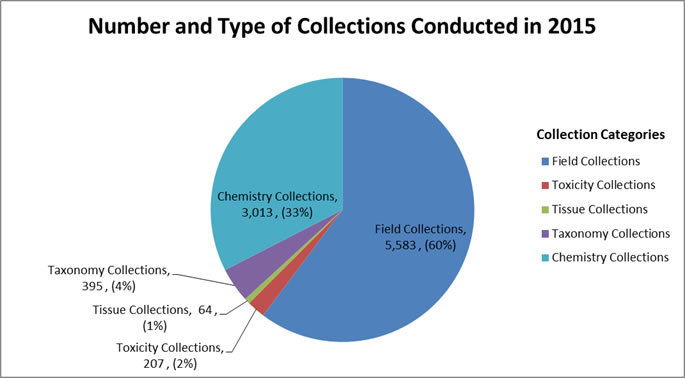| Algae: |
1 count represents algae collections at a single site on a given day |
| Benthics: |
1 count represents benthic macroinvertebrate (BMI) collections at a single site on a given day |
| Field Measures: |
1 count represents all field measures taken at a single site on a given day regardless of number of parameters to be measured |
| Habitat: |
1 count represents any physical habitat observations for BA collections or routine field observations for WQ or Tissue collections at a single site on a given day. Each transect is counted towards the total. |
| Water Chemistry: |
1 count represents all water chemistry collected at a single site on a given day regardless of number of parameters to be measured |
| Water Toxicity: |
1 count represents all water toxicity samples collected at a single site on a given day regardless of the number of tests to be performed |
| Sediment Chemistry: |
1 count represents all sediment chemistry collected at a single site on a given day regardless of number of parameters to be measured |
| Sediment Toxicity: |
1 count represents all sediment toxicity samples collected at a single site on a given day regardless of the number of tests to be performed |
| Continuous Monitoring: |
1 count represents a deployment at a single site spanning a discrete period of time |
| Tissue: |
1 count represents a composite sample, made up of either individuals or multiple fish, at a single site regardless of number of parameters to be measured. At a single site, each species collected gets counted. |
